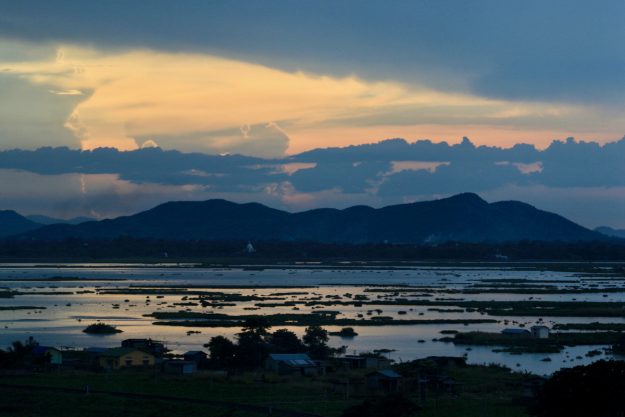by Timos Karpouzoglou
With funding recently received from Riksbankens Jubileumsfond, a new 3-year project has been launched at the Division of History of Science, Technology and Environment.
In the project NATURE, we are an international team of researchers that will be looking at an all too familiar term these days but with a slightly different angle. As researchers, we are increasingly exposed and concerned about the challenges of nature, for instance its role in society and the way ecological concerns are creating a new form of discourse—some would even say an anxiety—about the future of societies. In other words, we see the connection of nature and society as becoming re-thought, and, perhaps more than before, intertwined with the everyday practice of living and imagining our world.
This new rewiring of nature and society poses a set of interesting questions and dilemmas for the critical scholar of infrastructure. For over a century, infrastructure planning has been heavily influenced by modernity; and, in particular, an engineering ideal of universal, uniform, networked infrastructure materialized in those such as grid electricity networks, water and sanitation networks and other similar large socio-technical systems (Furlong 2014). However, we believe that we are witnessing a set of processes that vary globally but, at their core, are about embracing infrastructure heterogeneity. Discourses focusing on resilience in infrastructure planning are also increasingly influential in directing attention to a different way of thinking about the role of nature and society as part of infrastructure (Karpouzoglou et al 2019). In cities like Guwahati, India, the importance of natural ecosystems such as wetlands can be viewed as heterogeneous infrastructure for flood mitigation of the Brahmaputra river (See Figure 1). Hence, in our study, we place special emphasis on exploring the role of ‘heterogeneous infrastructure configurations,’ a phrase that aims to capture the diversity of infrastructure which we are witnessing today (Lawhon et al. 2018).

During the project’s three years, we seek to widen the perspective of nature and society by considering different components of modernity, specifically, modern ideas of infrastructure and of nature. We are inspired by work that describes the notion that technology (and sociotechnical systems) carries values and ideas which are built into the artifacts by their designers and system builders and co-created by users (Akrich 1992). In other words, even if infrastructure is often conceived as a technological endeavor—it is never purely technological.
Central to our methodology will be narrative enquiry (Sinclair 2002). In other words, by focusing on the storytelling practices of socio-technical regime actors such as engineers and planners in the cities of Stockholm (Sweden), Guwahati (India) and Kampala (Uganda) we will attempt to bring to the surface potentially unaddressed narratives of nature and society. We will also experiment with creative techniques, including the use of boundary objects (e.g. photographs, toy models of different kinds of infrastructure) that will help structure and prompt respondents to explore unspoken ideas. By means of organizing a public exhibition in the Stockholm area, we will explore the role of the arts as a medium for communicating new ideas about infrastructure.
NATURE Research Team
Timos Karpouzoglou, Division of History of Science, Technology & Environment, KTH, Sweden
Pär Blomqvist, University of Mälardalen, Sweden
Mary Lawhon, Department of Geography and Environmental Sustainability. University of Oklahoma, USA
Katarina Larsen, Division of History of Science, Technology & Environment, KTH, Sweden
David Nilsson, Division of History of Science, Technology & Environment, KTH, Sweden
Sumit Vij, Public Policy and Administration group, Wageningen University & Research, The Netherlands
References
- Akrich, M., 1992. “The De-scription of Technical Objects.” In Wiebe Bijker and John Law, eds., Shaping Technology/Building Society: Studies in Sociotechnical Change, pp. 205-224.MIT Press, Cambridge, MA.
- Furlong, K., 2014. “STS beyond the ‘modern infrastructure ideal’: extending theory by engaging with infrastructure challenges in the South.” Technology in Society, 38, 139-147.
- Karpouzoglou. et al. 2019. “Unearthing the ripple effects of power and resilience in large river deltas.” Environmental Science & Policy.
- Lawhon, Mary, David Nilsson, Jonathan Silver, Henrik Ernstson, and Shuaib Lwasa. 2018. “Thinking through Heterogeneous Infrastructure Configurations.” Urban Studies 55 (February).
- Sinclair BJ., 2002. “Narrative inquiry: more than just telling stories.” TESOL Quart, 36, 207– 213.

